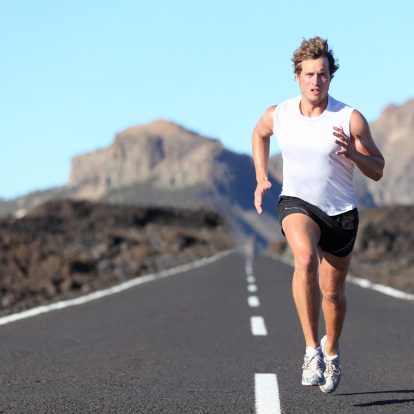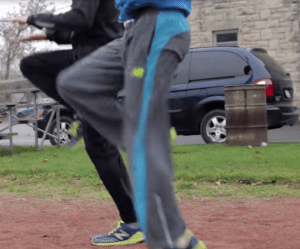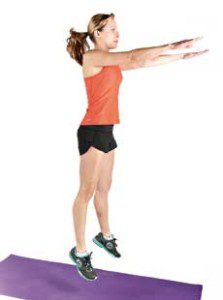Run Mechanics: Thoughtful Improvement

 Most athletes would agree that swimming is a highly technical sport. Even after months or years of not training, unfit ex-collegiate swimmers will outperform fit triathletes with poor mechanics in the pool. To a certain degree, cycling is also technical (particularly off-road) and time and effort is put into ensuring that biomechanics on the bike are sound with a professional bike fit. However, very often triathletes will ramp up their run training with heavy speed work without evaluating their run mechanics with the assumption that running is instinctive or natural. Very often this results in repetitive stress injuries.
Most athletes would agree that swimming is a highly technical sport. Even after months or years of not training, unfit ex-collegiate swimmers will outperform fit triathletes with poor mechanics in the pool. To a certain degree, cycling is also technical (particularly off-road) and time and effort is put into ensuring that biomechanics on the bike are sound with a professional bike fit. However, very often triathletes will ramp up their run training with heavy speed work without evaluating their run mechanics with the assumption that running is instinctive or natural. Very often this results in repetitive stress injuries.
Running with poor mechanics is hard on the body. Most people without a history of run training when they were younger, like a track career of some sort, really have no idea how to run with good form. Even track runners might need to address how they’re running to adapt to the needs of distance training. I believe many athletes have adequate coaching to ramp up training properly, but I would argue most do not have adequate coaching on their technique. I believe most triathletes will benefit from approaching their mechanics first and then let the fitness follow.
Athletes like to have a radical shift in process that they actively implement for immediate results. I think that is why diet changes like “gluten free” and cycling changes like a bike fit and oval chain rings are so popular. Having immediate and radical changes feels like a difference has been made. Changing running mechanics will not be a quick fix at all. Teaching the body to run properly requires weeks or months of methodical, mindful and patient reprogramming of neuromuscular pathways. It’s a major commitment during which you may find you go backwards instead of forwards for a period of time.
If you’ve ever tried to change your swim mechanics you’ll understand how painfully slow positive improvements can take. With running, improvements can be seen much quicker but not immediately. Most of us have more body awareness on land than we do in the water, which helps us to make run changes easier than swim changes.
Changing your run mechanics involves having a coach break down the entire run stride and retrain how you lift your legs, hold your head and move your arms. Access to video analysis helps to quickly reinforce the feeling of good mechanics and show you what the changes look like so you can picture them in your mind. It is a constant, ongoing process to train the body to move in a new way. No fancy shoe or new compression gear is going to be a substitute for thoughtful, methodical, hard work.
Without good run mechanics, the chance you’ll be able to achieve the training mileage you need for major fitness improvements in the run, particularly over the marathon distance, are diminished. I would urge any Ironman triathlete to seek out run coaching for technique first and foremost. Running with your feet under your hips will radically change your experience running and possibly lead to many more injury free seasons of triathlon training.
 I believe run technique training is as important if not more important than that bike fit you have booked. In my experience, I had some slower run splits while I was making changes. I wish I had done the run form overhaul much earlier than I did. Only last season I sought skills training with Mindful Strides and now through Livefit coaching I am building on the technical component of my running. To continue this process, technical skills days are scheduled often during the week to incorporate better running from. When this technical component is added to strength training, you might find it is the key to injury prevention.
I believe run technique training is as important if not more important than that bike fit you have booked. In my experience, I had some slower run splits while I was making changes. I wish I had done the run form overhaul much earlier than I did. Only last season I sought skills training with Mindful Strides and now through Livefit coaching I am building on the technical component of my running. To continue this process, technical skills days are scheduled often during the week to incorporate better running from. When this technical component is added to strength training, you might find it is the key to injury prevention.
